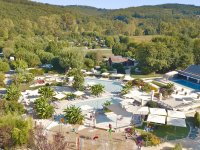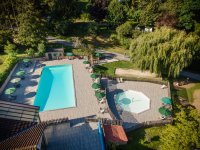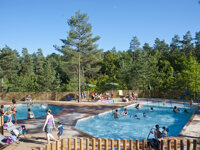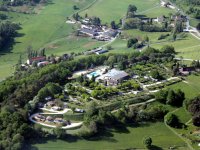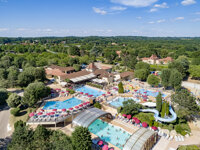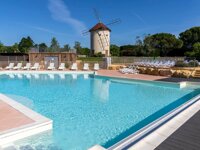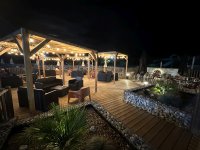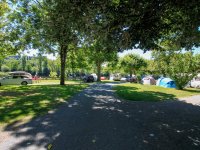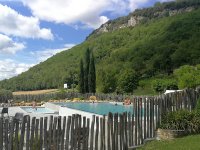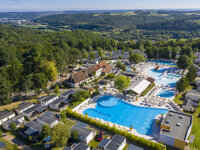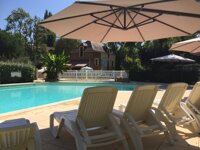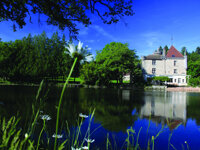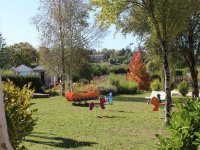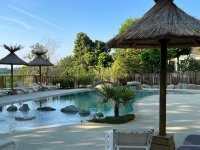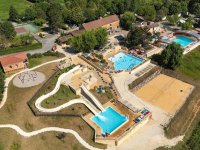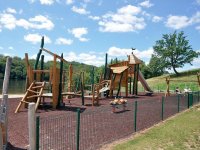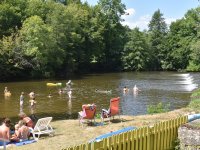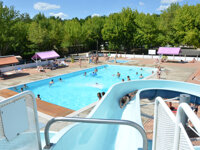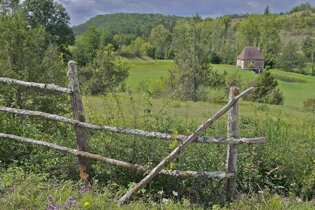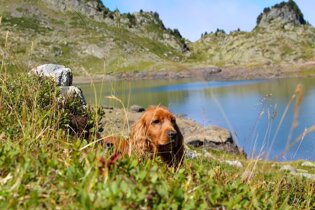Camping in the Dordogne
151 campsites in France, Aquitaine, Dordogne
Campsite Listing Google Map
The following consent is required:
Tracking & performance, Targeting & advertising.
One of the earliest cradles of civilisation, the Dordogne is a collage of prehistoric caves adorned with ancient paintings and medieval fortresses watching over a landscape of languid rivers, soft grassy plains and oak forests. Sheltering mankind since the Palaeolithic era, it cannot help but invoke a sense of timelessness and wonder in the curious visitor.
The Font de Gaume cave is the ultimate place to experience this awareness of our enduring history. The carefully executed cave paintings are mostly of animals, portrayed in rich colour and expressing lifelike energy. To protect them, the number of visitors is limited daily, so booking is essential. Close by is Sarlat, an attractive town that sprang up around a 9th-century Benedictine abbey. The streets of its old town are lined with sandstone buildings that lend the place a pleasant warmth when the sun shines on them.
Walking and cycling holidays in the Dordogne are best in the spring when the flowers bloom and the town markets are well stocked or in autumn when the heat subsides, and the grape harvest begins.
Unknown matrix block type: clear2!
Technically the Dordogne is one of the three regions that make up Aquitaine, the huge swathe of south west France that stretches from Bordeaux to the Biarritz. The other two regions are the Gironde and Gascony.
The history of the Dordogne goes back many thousands of years to when man lived in the caves of the Périgord in the beautiful valleys of the Dordogne and Vézère, leaving cave paintings at sites such as Les Eyzies and Lascaux.
The Dordogne river rises in the volcanic mountains of the Auvergne from where it forges west through the craggy forests of Limousin and on to Périgord. Mellow stone villages, celebrated castles, vineyards, meandering rivers and lush hillsides crowned with medieval bastide villages all combine to make this a region of unparalleled diversity and appeal.
Campsites in the Dordogne
There are some truly exceptional campsites here in the real heart of the Dordogne. Typically in sublime locations, they are surrounded by rolling wooded hills with sleepy honey coloured villages all around, adorned with vibrant geraniums overflowing from crumbling pots.
Campsites in the Dordogne are often just a stone’s throw from extraordinary castles and many too are set in the grounds of old farmhouses or mills with large, grassy pitches set between tall oak and walnut trees. These shady trees, welcome during the hot summers, are often a legacy from the days when farmers planted walnut trees for the benefit of future generations. The trees were uniquely able to provide food, fuel, timber and flour and consequently a mature specimen was highly prized. Don’t be surprised if you are offered a bag of walnuts occasionally!
Many campsites offer a host of great activities, either on the site itself (such as river swimming, swimming pools or tennis) or a short drive away (canoe trips). Walking and cycling routes are invariably numerous, and with options suitable for all levels of fitness and age.
Excursions and activities
Excursions might include boat trips from Domme and historic La Roque Gageac or canoe excursions with a guide – there are routes for beginners and the more ‘hesitant’. Children love the crystal caves at Proumeyssac and also the underground train at Rouffignac, or you can pass through the vast underground chasm of Padirac.
Head to the spectacular medieval sanctuary of Rocamadour for incredible views and the astonishing houses clinging to the cliffs (not to mention the Forêt des Singes where the mischievous macaques roam free). Discover medieval gems at Beaulieu, Collonges-la-Rouge and Biron and view the incredible son et lumière at Tours de Merle.
Castles and bastides
The ancient dukedom of Aquitaine was ruled by the English for 300 years following the marriage of Eleanor of Aquitaine to Henry Plantagenet, the future king, in 1154. The fortified villages and castles of the area bear evidence of the resulting conflict between the French and the English for control, and today add character to the countryside.
The resulting castles still dominate the skyline. Brooding and austere, they occupy strategic positions and make a fascinating day out where the kids’ imaginations can run free. Popular castles to visit include Castelnaud and Beynac which famously faced each other across the river during the Hundred Years War, one French, one English. Also elegant Milandes, long associated with the colourful Josephine Baker, and others like Feyrac.
The fortified hilltop villages, or bastides, are quite magical. One of the most iconic is Domme, whose far reaching views from the ramparts over the majestic river Dordogne below are quite indescribable and certainly among the finest in France.
The 13th century bastide of Monpazier is delightful. Enter via fortified gateways and stroll beneath covered arches surrounding the elegant main square, pausing for refreshment in one of the pleasant cafés.
Sarlat
The medieval town of Sarlat is not only itself one of the jewels in the crown of the Dordogne but it is also wonderfully well-placed for exploring the area’s pre-history, ancient villages and pastoral countryside. The mellow stone buildings are beautifully preserved – so much so that if the cobbled streets and alleys seem familiar, it’s probably because you’ve seen them before in one of many historical films made here, including a version of Les Misérables.
The Saturday market is widely held up as one of France’s best and choosing a restaurant can be a serious challenge – all look very tempting and generally prices are reasonable for excellent fare. Tough local competition ensures prices are kept keen and value high.
Prehistory
The valley of the Vézère is the cradle of man’s past and teems with prehistoric treasures from 17,000 years ago. Les Eyzies is the world centre and the famed cave paintings at Lascaux were discovered by boys in 1940, quickly becoming a sensation before it was realised that visitors were damaging the very thing they came to marvel at. An incredibly intricate replica was created at Lascaux II and a Lascaux 4 offers an even more immersive experience.
Wines
Some of the world’s most famous vineyards are located around Bordeaux and St Emilion. The most famous are from the renowned estates of the Médoc with wine communes like Pomerol, Margaux, Graves, St Julien and St Estèphe and Sauternes enjoying stellar status. Many, but certainly not all, allow visits to their cellars and wine tastings. Bergerac, among others, offers excellent wines at affordable prices.
Cuisine of the Dordogne
The Dordogne is gastronomy central and fantastic delicacies can be found in restaurants as well as markets and on the roadside. This is very much the land of the duck - foie gras is a regional tradition, with confit de canard a ubiquitous and hearty dish and duck fat being used as the cooking medium of choice. Duck breast is on pretty much every menu, and rightly so.
Truffles are a prized delicacy, as well as cep mushrooms. Look out for cheese from Rocamadour, walnuts, strawberries, honey, chestnuts, an incredible array of salads and vegetables. You will not go hungry!
St Emilion
This is a great place for a tour of big name vineyards, perhaps starting with the illustrious Château Ausone whose rock-hewn cellars stretch under the vineyard. The ancient town is gorgeous, perched on a hill with great views of the encircling countryside. Explore the cobbled alleys to discover fine houses, the Château du Roy and the curious Eglise Monolithie, carved out of the hill by 8th century monks.
